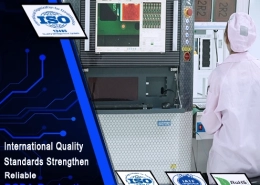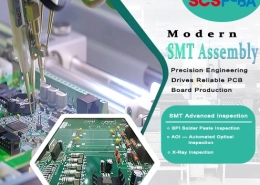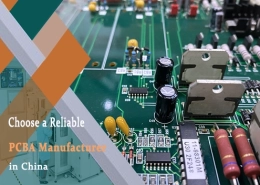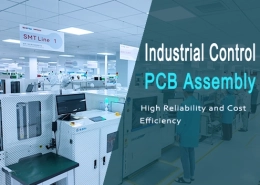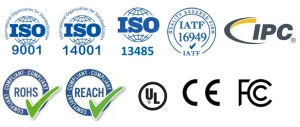Industrial Control Equipment PCBA Processing Steps and Specific Applications
In industrial control equipment, rigid circuit boards and rigid-flex PCB are vital in ensuring stable signal transmission, thermal management, and high reliability. High-frequency PCB technology is increasingly integrated into these solutions to enhance system performance, minimize interference, and support high-speed data processing.
This article explores the applications of rigid PCB assembly and rigid-flex printed circuits in industrial automation, power management, and embedded control systems.
1. Steps in Industrial Control PCB Board Assembly Proofing Processing
● Preparing Components and Materials
The first step is ensuring accurate design documents and a BOM (Bill of Materials). Based on BOM specifications, high-quality electronic components such as processors, memory, and high-frequency chips are procured. These components undergo rigorous testing to verify their performance, quality, and reliability, ensuring they meet high-frequency printed circuit board design requirements.
● Printed Circuit Board Production
A well-planned PCBA layout enhances the circuit board’s overall performance. The high-frequency PCB assembly process considers critical parameters such as:
- Board thickness
- Number of layers
- Copper thickness
- Minimum line width
- Power distribution and grounding techniques
- Spacing between components
Optimizing these factors ensures stable signal transmission, low electromagnetic interference (EMI), and high durability for industrial control applications.
● Component Placement
Automated surface mount technology (SMT) machines precisely place high-frequency components onto the PCB, ensuring accurate positioning and minimized signal loss.
● Welding Process
Welding is a critical step in circuit board manufacturing process. The solder paste is heated in a reflow oven, forming reliable solder joints. Strict control of welding temperature, time, and material selection ensures the integrity of high-frequency PCBs, preventing signal degradation and interference.
● Inspection and Testing
To ensure optimal PCB performance, multiple inspection and testing procedures are implemented:
- Automated Optical Inspection (AOI): Detects placement and soldering defects.
- Functional Testing: Specialized testing instruments and fixtures verify the functionality and signal integrity of the high-frequency PCBA.
These quality control measures identify potential issues early, ensuring the final product’s reliability and durability in industrial control applications.
2. Industrial Control Equipment – High-Frequency & Flexible PCB Applications
In industrial control systems, high-frequency PCBs and flexible PCBs play a crucial role in optimizing signal transmission, system integration, and device durability.
● Industrial Robots
Industrial robots have multiple joints that require flexible and high-frequency signal connections. Flexible PCBs can bend and rotate at joints while high-frequency circuit boards ensure fast, stable data transmission for real-time control and automation.
● Automated Production Lines
Industrial automated production lines use sensors distributed across different locations to monitor and control manufacturing processes. High-frequency PCB assemblies provide fast, interference-free signal processing, while flexible PCBs enable efficient sensor integration, improving system installation and maintenance.
● Industrial Computers & Embedded Systems
Industrial computers and embedded systems require high-density, high-speed interconnections. High-frequency PCBs optimize signal integrity and reduce EMI, while flexible PCBs minimize connectors and cables, improving system reliability and performance.
● Industrial Measuring Instruments
Devices like pressure sensors and thermometers require compact, high-performance circuit designs. High-frequency PCBs ensure precise data processing, while flexible PCBAs adapt to limited space requirements.
By integrating high-frequency PCB technology with flexible PCBA solutions, industrial control equipment can achieve faster processing, higher stability, and greater adaptability in modern industrial automation.
SCSPCBA specializes in high-frequency PCB assembly and industrial control PCB manufacturing assembly solutions, offering high-reliability circuit board manufacturing to support advanced industrial applications. Contact us today to enhance your industrial control equipment with cutting-edge circuit board assembly technology!
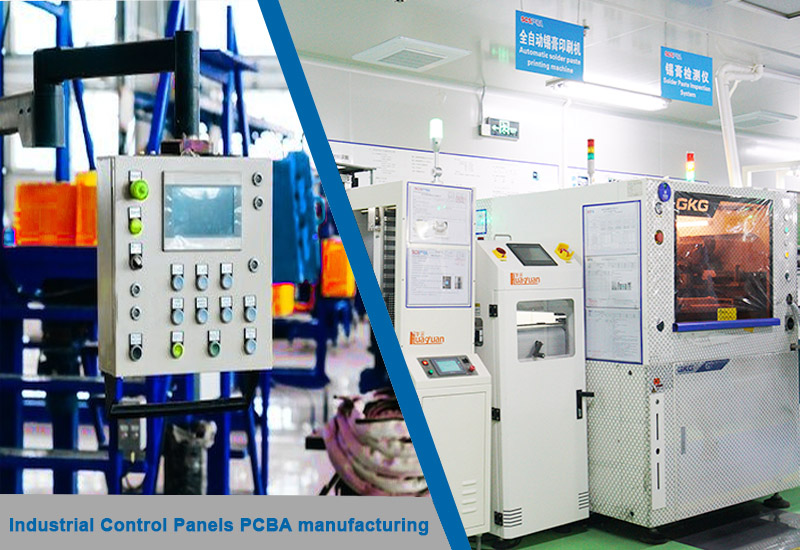
3.Industrial Control Equipment – Rigid PCB Applications
Rigid PCB manufacturing and assembly features a stable structure, excellent thermal stability, and cost efficiency, making it an indispensable component in industrial control systems.
● Control Panels
Rigid PCB assembly ensures reliable signal transmission and power distribution. It is widely used in the main control panels of industrial control equipment, providing a platform for:
- Central processing units (CPUs)
- Memory modules
- High-frequency signal interfaces
These components work together to ensure the stable operation and real-time data processing of industrial equipment.
● Power Management Systems
In industrial power management modules, rigid high-frequency printed circuit boards support the installation of key components such as:
- Transformers
- Voltage regulators
- Filters
By enhancing power stability and reducing electromagnetic interference (EMI), these rigid PCBs improve the efficiency and reliability of power transmission in industrial control systems.
● Motor Control Boards
Rigid circuit boards serve as the electrical backbone for controlling:
- Motor start/stop functions
- Speed adjustments
- Actuator controls (valves, relays, hydraulic cylinders)
These high-frequency PCB solutions ensure precise motion control and low-latency signal processing in industrial automation.
● Monitoring Systems
Rigid PCB fabrication and assembly are widely used in industrial safety monitoring systems, supporting devices such as:
- Emergency stop buttons
- Safety door locks
- Photoelectric sensors
These high-reliability PCBs provide secure data acquisition and transmission, ensuring safe and efficient system operation.
4. Industrial Control Equipment – Rigid-Flex Circuit Board Applications
Rigid-Flex PCBA combines the mechanical strength of rigid boards with the flexibility of flexible circuits, making it ideal for high-density wiring, complex signal transmission, and vibration-resistant applications.
● Control Systems for Heavy Machinery
Heavy industrial machinery (e.g., excavators, cranes, bulldozers) requires highly durable and vibration-resistant control systems. Rigid-Flex circuit board provide:
- Structural support (rigid PCB sections)
- Flexible electrical connections between modules (flex PCB sections)
Sensors embedded in heavy machinery rely on rigid-flex high-frequency PCBs to maintain reliable signal processing even under extreme mechanical movements.
● Embedded Systems
In industrial embedded systems, modules such as CPU, memory, and high-speed signal processors require compact, high-density interconnections. Rigid-flex PCBs enhance:
- Signal integrity and EMI resistance
- Vibration and impact resistance
- Long-term system reliability
These advanced PCB solutions optimize system performance while maintaining high-frequency stability in industrial automation applications.
● Portable Test Instruments
Handheld devices like oscilloscopes and multimeters demand lightweight, durable PCB designs. Rigid-flex circuit boards optimize internal space, reducing:
- Connector and cable requirements
- Device weight
- Power consumption
This leads to greater portability, improved durability, and superior performance in industrial testing applications.
5. Your Trusted Partner for High-Frequency PCBA Solutions
At SCSPCBA, we specialize in high-frequency PCB assembly, rigid PCB manufacturing, and rigid-flex PCBA solutions for industrial control equipment. Our advanced PCBA design, SMT assembly, and testing processes ensure reliable, efficient, and high-performance circuit boards.
Need a customized industrial PCBA solution? Contact SCSPCBA today to elevate your industrial control systems with cutting-edge PCB technology!


